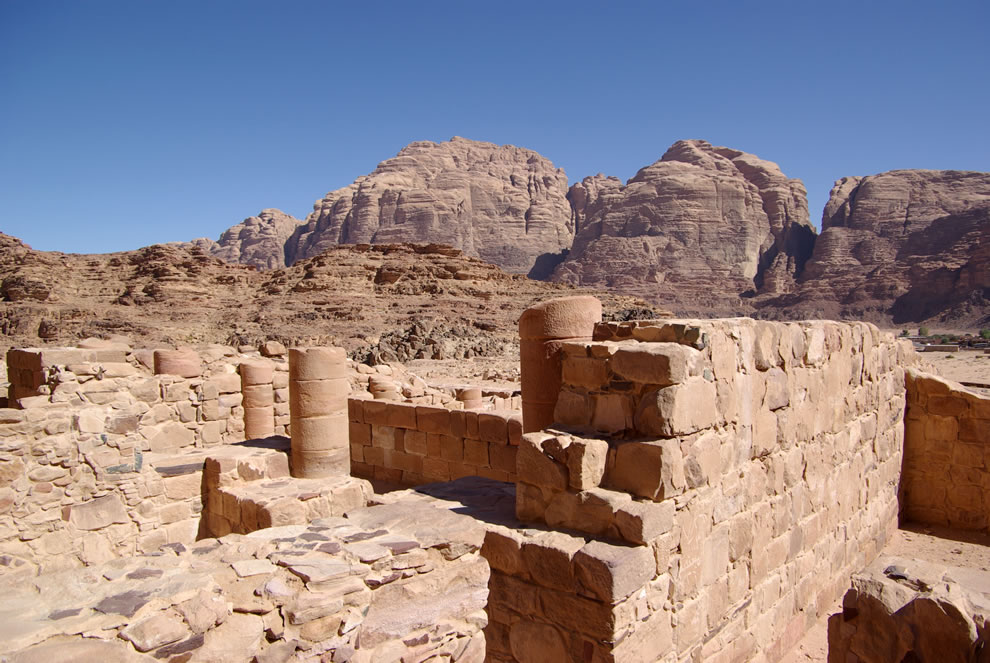|
Other Archaeological Sites / The Neolithic of the Levant (500 Page Book Online) Ancient Wadi Rum (Ramm) in Jordan
The purpose of the Wadi Ramm Recovery Project was a written and photographic documentation of the excavation of two structures at the foot of Jebel Ramm described as a Nabataean house and bathhouse. Excavation of these structures took place in 1964. Any records or documentation of the site have since been lost; the only exception is two photographs from the Department of Antiquities Archives. The part which is now called the Villa appeared as a luxurious building which included paved courses - covered painted plaster walls - imported shells and a bronze Venus figurine. The Baths were equipped with a hypocauste; the calidarium contained an embedded basin and foundation of concrete and its pilae was made of stone instead of more current brick construction. The only structures at Wadi Ramm that had been properly documented were the aqueduct and shrine at Ain Shellaleh and the Nabataean temple. The temple was first excavated by Horsfield and Savignac in 1934 and was later worked on by Kirkbride. On the basis of inscriptions in the area the temple has been assigned to the Goddess Allat - a principal deity of the Nabataean people associated with water supply. The date of the temple is now assigned to the reign of the Nabataean King Aretas IV in the first century B.C. or early first century A.D. .....
The Wadi Ramm Recovery Project:
|
